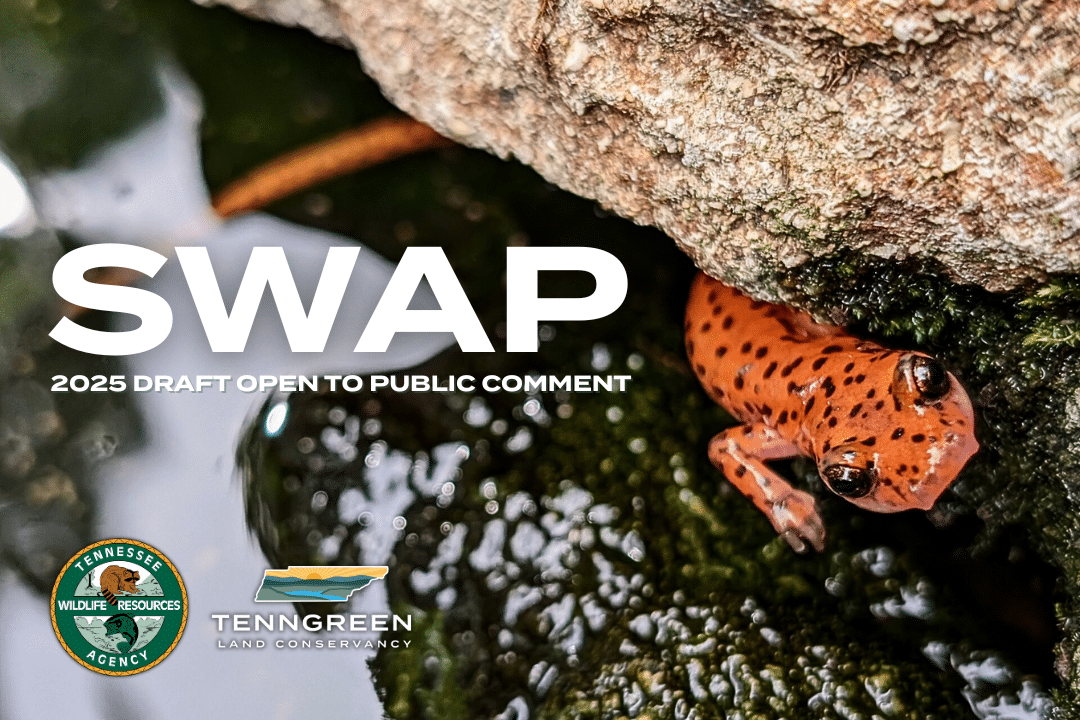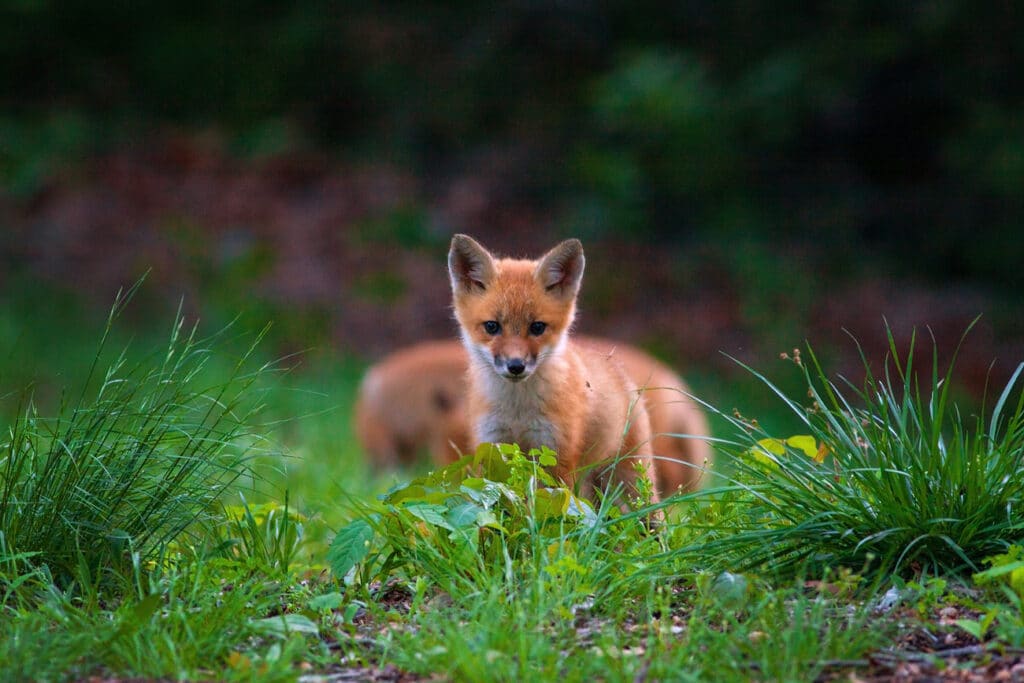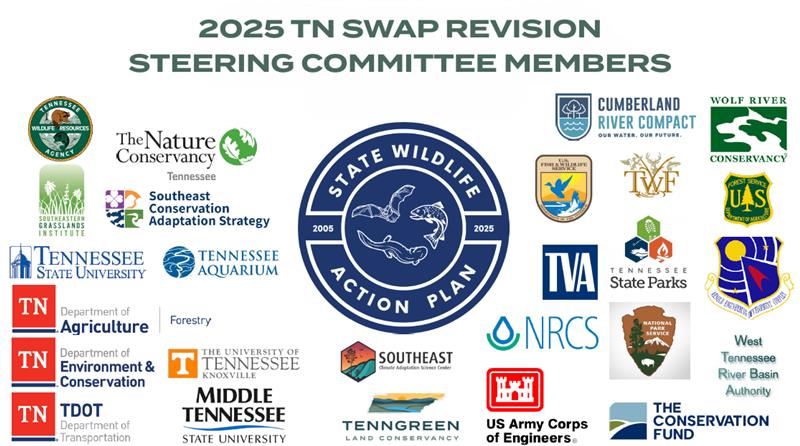2025 State Wildlife Action Plan (SWAP) Draft Now Available For Public Comment

Through August 4th, Tennessee’s 2025 State Wildlife Action Plan draft (SWAP) is available for review and public comment.
Your voice matters, and we encourage you to review the draft, accessible using the link above. Please provide comments and letters of organizational support, if you are so inclined. Comments may be shared either through the web form or by email.
WHAT IS THE SWAP?
The Tennessee State Wildlife Action Plan (SWAP) is a comprehensive, statewide strategy developed to guide the conservation of Tennessee’s native wildlife and their habitats, particularly rare, declining, and/or vulnerable species.
SWAP is more than a policy document; it’s a science-based blueprint used by state agencies, nonprofits, landowners, and federal partners to prioritize conservation funding and action. Every state in the U.S. is required to maintain a SWAP under federal law.
In Tennessee, the SWAP is managed by the Tennessee Wildlife Resources Agency (TWRA) and is updated roughly every 10 years. The most recent version released in 2015 with the 2025 revision now underway.
This latest revision is a powerful tool for conservation, providing a data-driven roadmap for proactive strategy over the next decade. It identifies species of greatest conservation need, highlights emerging threats, outlines which conservation efforts can most effectively reduce those stressors, and indicates where to then target our actions.
By submitting a comment, you help ensure this plan reflects the priorities of those who care deeply about Tennessee’s natural heritage. Your voice supports a future where conservation is collaborative, effective, and enduring.
🔍 What’s inside the 2025 SWAP?
- Historical and current ecological conditions
- Analysis of Tennessee’s biodiversity & Species of Greatest Conservation Need
- Projections of land use changes and emerging threats
- Strategies to counter habitat loss and species decline
- Tools to track conservation success
- Guidance on where conservation efforts will have the most impact
- Highlights of Tennessee’s conservation resources and achievements
How Is the SWAP Created?

The process is multi-year, interdisciplinary, and participatory. Here’s how it unfolds in Tennessee:
1. Scientific Assessment: Biologists and ecologists review the latest data on Tennessee’s wildlife species and their population trends, threats (like habitat loss, climate change, invasive species), and conservation needs.
2. Habitat Mapping & Risk Analysis: Advanced tools like GIS mapping and vulnerability assessments help identify the most ecologically important—and threatened—landscapes across the state.
3. Public and Stakeholder Input: Tennessee Wildlife Resources Agency & The Nature Conservancy hosts listening sessions, surveys, and working groups with stakeholders including:
- Conservation nonprofits (like TennGreen)
- Academic researchers
- Outdoor recreation groups
- Private landowners
- Tribal entities
- Federal agencies (e.g., USFWS, NRCS)
4. Priority Setting: Species and habitats are prioritized based on need, feasibility, and impact. Conservation strategies are tailored to specific ecosystems and threats.
5. Plan Publication & Federal Review: Once complete, the plan is submitted to the U.S. Fish and Wildlife Service for approval. After adoption, it becomes the guiding framework for Tennessee’s non-game wildlife conservation for the next decade.
How TennGreen Uses the SWAP
At TennGreen, conservation is all-encompassing. The species we share our brilliant state with are a top priority in our work, and the SWAP helps us:
- Identify and protect priority habitats that support rare or declining species
- Align our conservation easement and land acquisition efforts with state goals
- Apply for federal grants that support habitat protection
- Collaborate strategically with TWRA, TDEC, and other partners
- Build science-backed cases for urgent conservation in front of funders, donors, and landowners
Our Director of Private Land Conservation, Kristen Hanratty, sits on the SWAP Steering Committee, and many of our conservation easements (CE) and acquisitions protect lands that sustain endangered and rare species. These include:
- Basin Springs CE provides habitat for 26 rare species in Williamson County and eight rare species in the surrounding watershed. Two rare species—Sharp-shinned hawk (Accipiter striatus) and Butternut (Juglans cinerea)—have been directly documented on the property.
- Lamar Cedar Glades and Woodlands CE protects over 200 acres of globally-unique limestone glades that are known as “cedar glades” due to the eastern red cedar trees (Juniperus virginiana) that populate their rocky outskirts. Lamar Cedar Glades and Woodlands is exceptional, as three rare species that only thrive in cedar glades have been found on the property: Limestone fameflower (Phemeranthus calcaricus), Tennessee milkvetch (Astragalus tennesseensis), and glade cleft phlox (Phlox bifida ssp. stellaria).
- Now under TDEC’s ownership and management after TennGreen’s acquisition, the 60 acres of Union Grove protect a critical population of Tennessee trillium (Trillium tennesseense).
- And many, many more.
Built On Collaboration
TennGreen is also proud to be known for our collaborative spirit. Through common goals and collective resources, more than 54,000 acres of Tennessee’s irreplaceable resources have been protected with donors, friends, like-minded conservation organizations, and local, state, and federal agencies, many of which are part of the 2025 Revision Steering Committee with us:

The SWAP is built on this collaborative spirit, and your participation ensures that this latest update reflects the values of Tennesseans who care about nature.
Thank you for joining us in this critical mission. Truly, we couldn’t do any of it without you.
Ready to comment? Enter the 2025 State Wildlife Action Plan draft by clicking here.
Additional comments may be shared either through the web form or by email.
For more information on Tennessee conservation, or if you have further questions about our State Wildlife Action Plan, please email us at land@tenngreen.org. We’d love to help any way we can.
Cover Photo: Cave salamander (Eurycea lucifuga) photographed in Davidson Co., TN, Jon D. B., TennGreen

